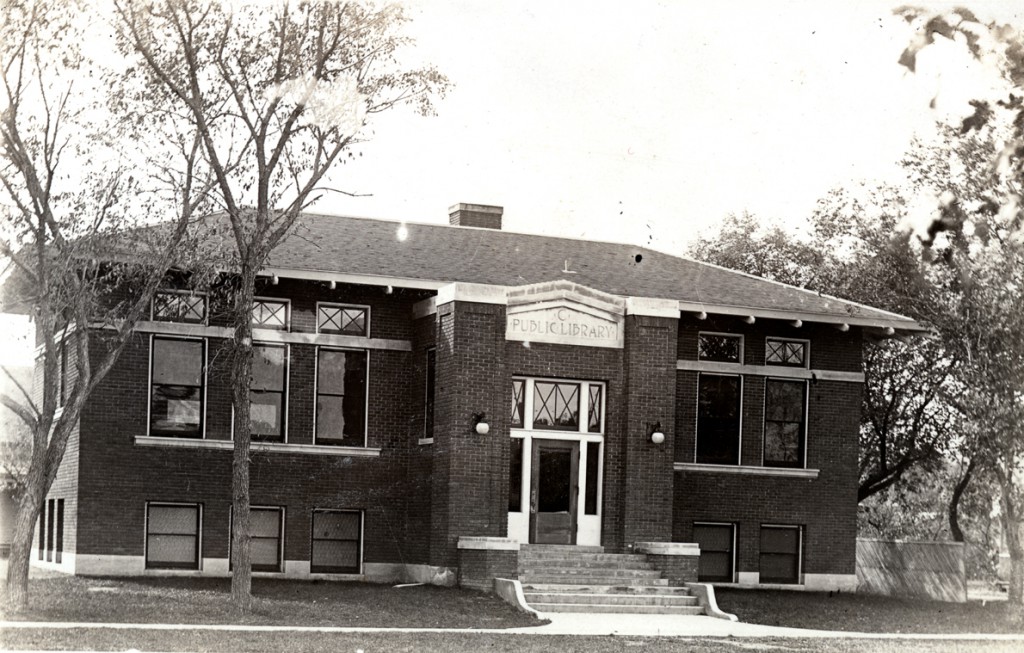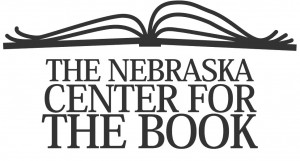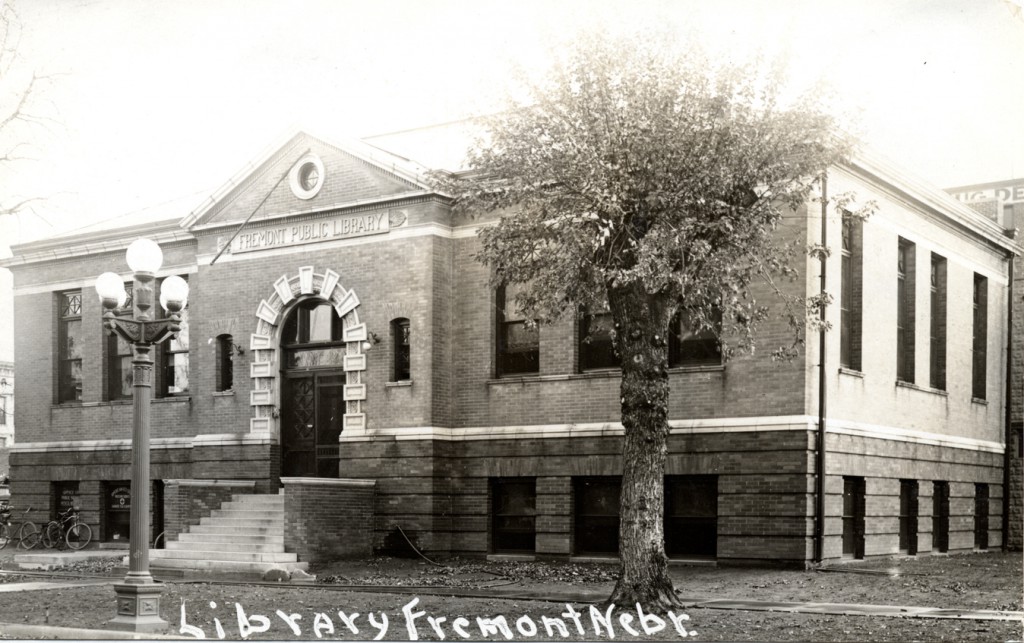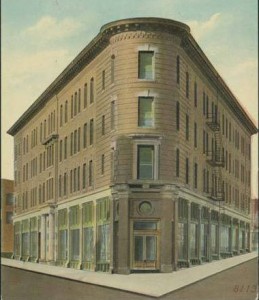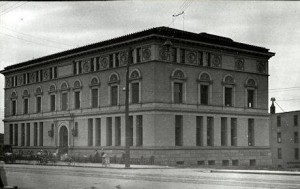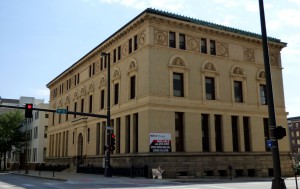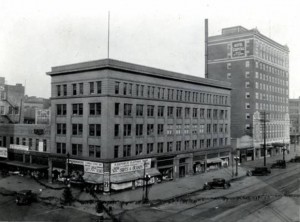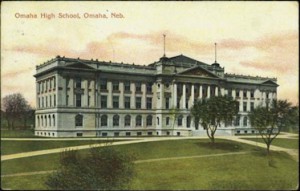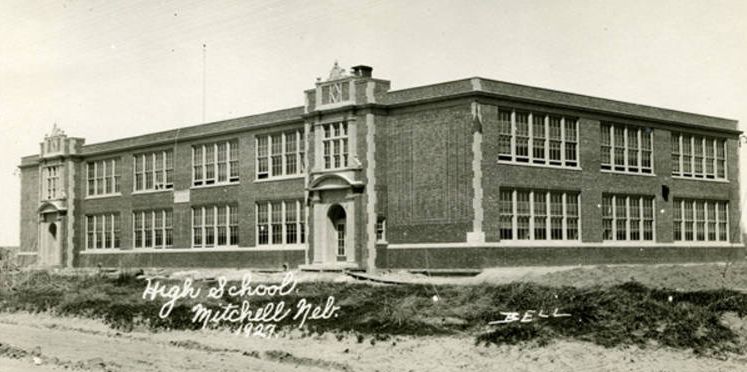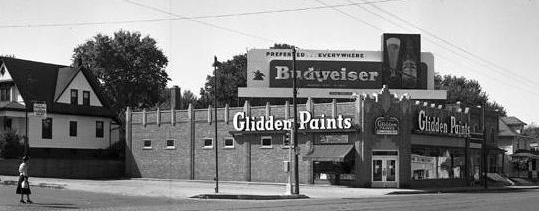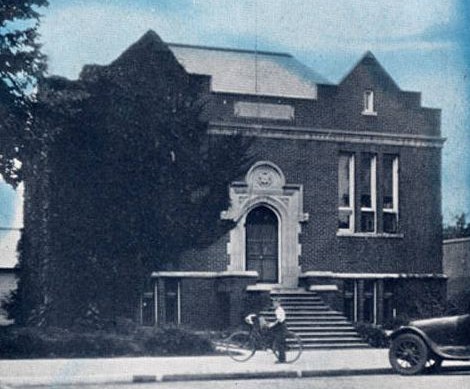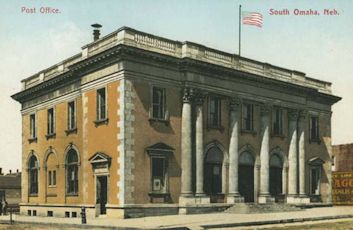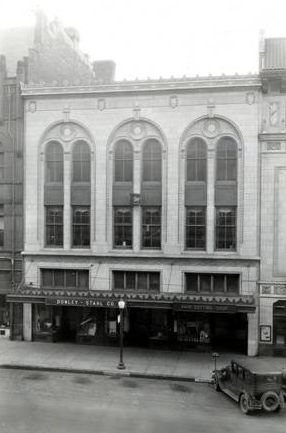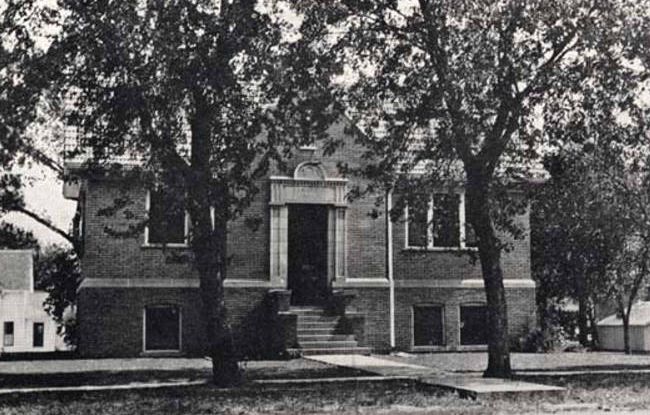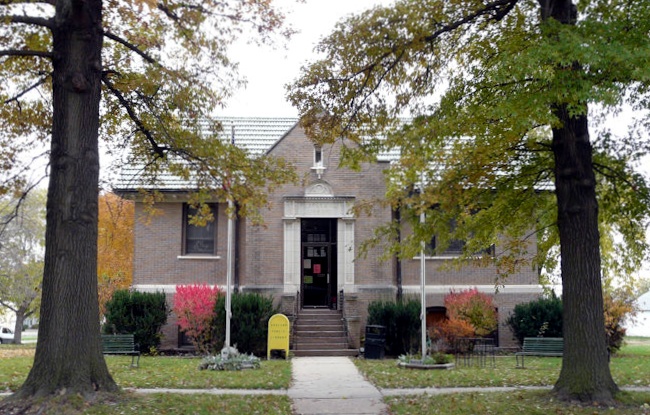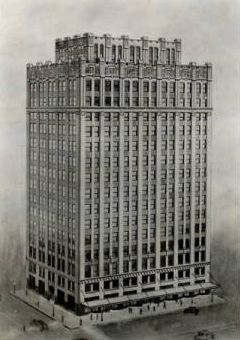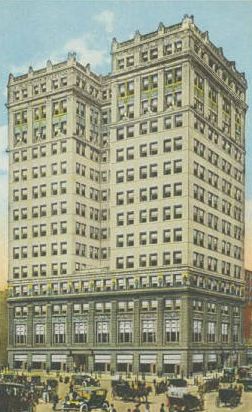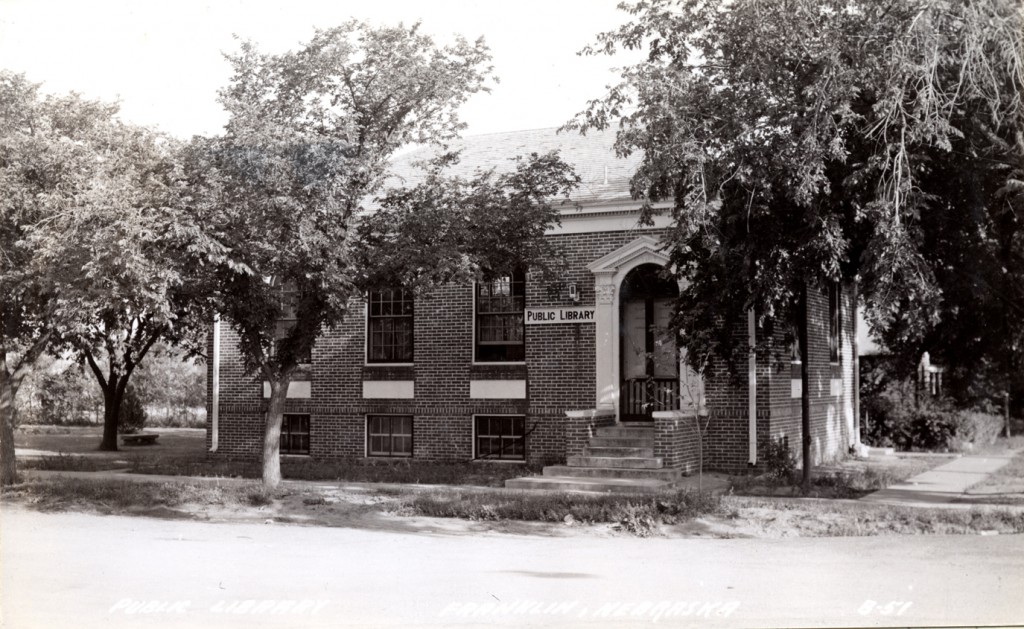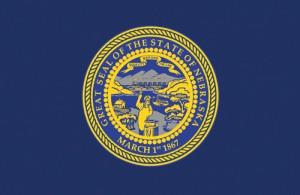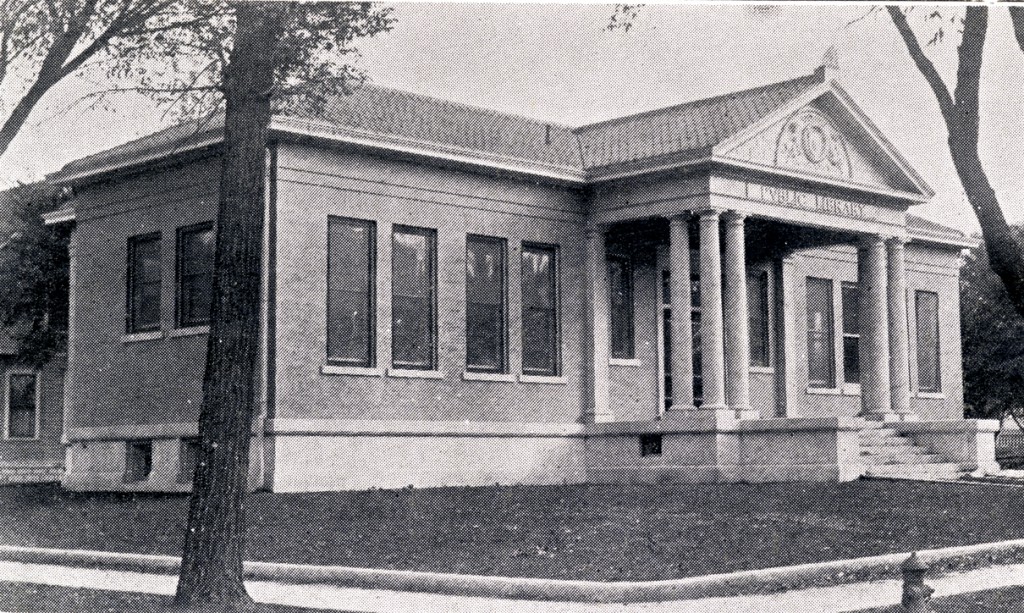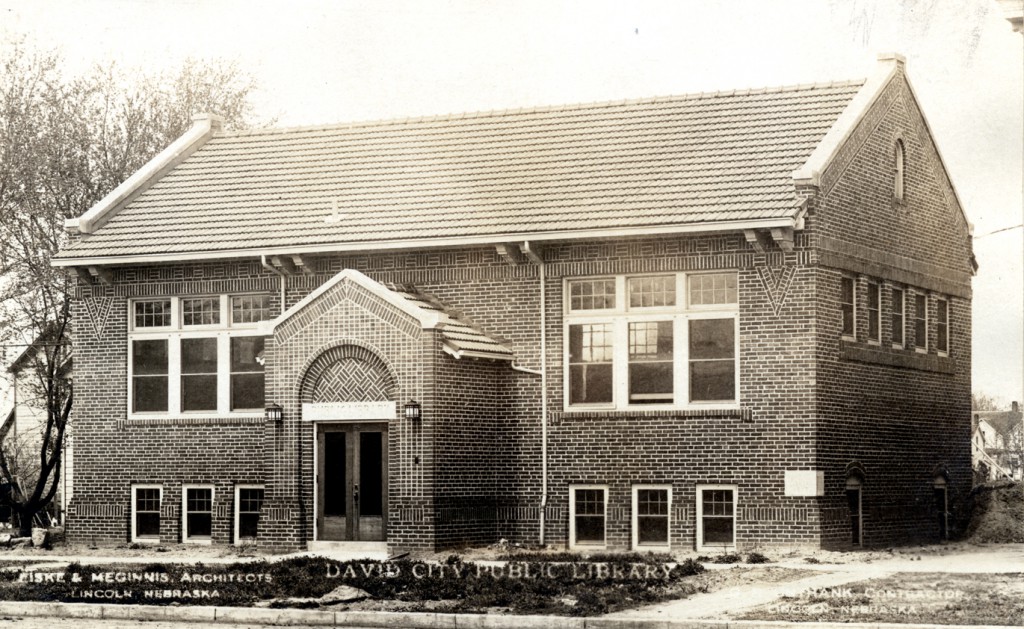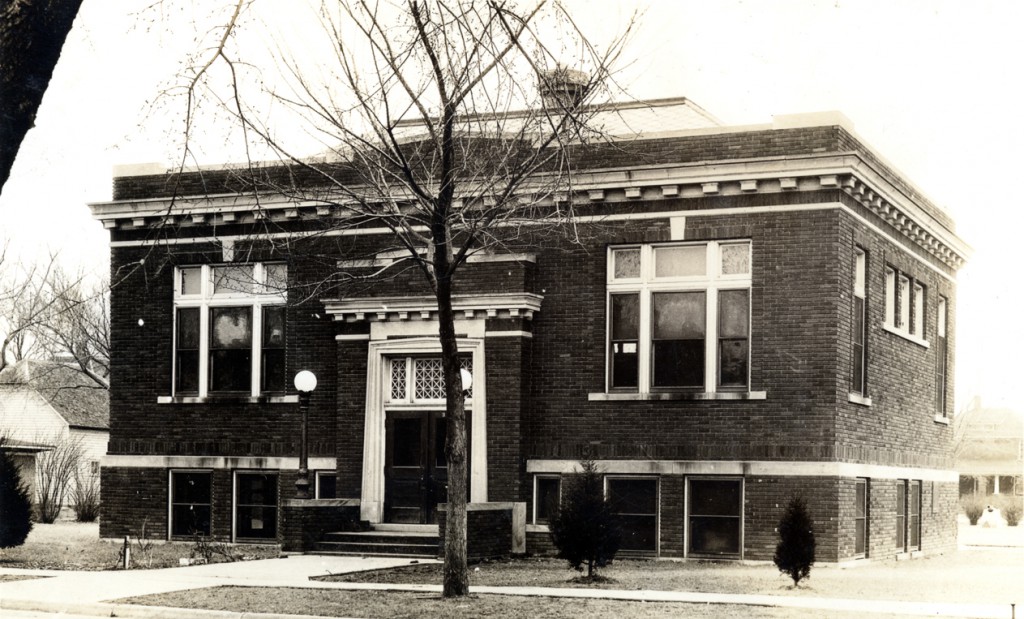Search the Blog
Categories
- Books & Reading
- Broadband Buzz
- Census
- Education & Training
- General
- Grants
- Information Resources
- Library Management
- Nebraska Center for the Book
- Nebraska Memories
- Now hiring @ your library
- Preservation
- Pretty Sweet Tech
- Programming
- Public Library Boards of Trustees
- Public Relations
- Talking Book & Braille Service (TBBS)
- Technology
- Uncategorized
- What's Up Doc / Govdocs
- Youth Services
Archives
Subscribe
Category Archives: General
The Data Dude on Social Media – Pt. 2
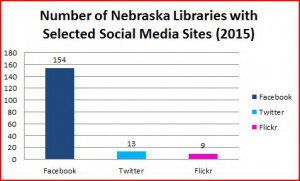 After last week’s post, which admittedly was thrown together at the last minute in order to meet the one post a week deadline (yes, I’m playing a self-inflicted weekly match-it game with Lori Sailors), the Dude got to thinking more about libraries and social media. If you look at the library markers on the public library maps from the NLC website, there are links to selected social media sites for each library (e.g. Facebook, Twitter, and Flickr). The bar chart to the right uses the data from the map, showing the distribution of social media sites used by Nebraska libraries. The data comes from the NLC supplemental survey, and after looking at the supplemental survey, some revision might be in order. How many of you have active Delicious accounts? LibraryThing? These are both options on the supplemental survey but not Pinterest or Instagram. Well, perhaps we will work to revise the supplemental survey so that these might be options. Are there others? If so, let me know.
After last week’s post, which admittedly was thrown together at the last minute in order to meet the one post a week deadline (yes, I’m playing a self-inflicted weekly match-it game with Lori Sailors), the Dude got to thinking more about libraries and social media. If you look at the library markers on the public library maps from the NLC website, there are links to selected social media sites for each library (e.g. Facebook, Twitter, and Flickr). The bar chart to the right uses the data from the map, showing the distribution of social media sites used by Nebraska libraries. The data comes from the NLC supplemental survey, and after looking at the supplemental survey, some revision might be in order. How many of you have active Delicious accounts? LibraryThing? These are both options on the supplemental survey but not Pinterest or Instagram. Well, perhaps we will work to revise the supplemental survey so that these might be options. Are there others? If so, let me know.
Now, as the chart illustrates, Facebook (or is it facebook?) is the dominant force here (if you don’t understand why, check out last week’s post (or just look at the bar chart) for a better understanding of the dominance of facebook. Perhaps you could also double check your marker on the aforementioned maps to make sure that they provide the correct link to your library’s social media pages. If they don’t, you can update that information via the supplemental survey. This can be done at any time, although reminders are sent around the time of the public library survey.
Arguably, what’s more important is keeping your social media sites updated. Having a twitter account and only tweeting once a year is neither worthwhile nor effective at getting your message out there. Which brings the Dude to the next point and that is what icon to use for these various sites. Facebook isn’t too difficult, anything with the lower case f on a blue background. Twitter, however is a bit trickier. Do you use the lower case t or one of the variations of the little birdy? Do we assume that everyone knows that the birdy represents twitter? For Pinterest, the cursive p will do, but should you choose the circle or square background? Flickr’s are a bit more complicated, with numerous blue and pink dots and various renderings of lower case fr’s. The Dude imagines that someday we will have throwback icons similar to that of baseball uniforms and soda packaging (if we don’t already). Shaka.
The Data Dude on Social Media Use
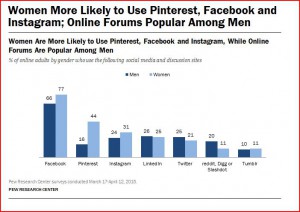 Today’s post will be a little blip about social media use. A recent Pew Research Center study took a look at gender and social media use and compared it to findings from previous years. While there once was a noticeable gender gap between men and women (with women being more likely than men to use social media), there is no longer such a noticeable difference. Does your library use social media? If so, what do you use and for what purpose? If you are interested in setting up social media sites or pages are you aware that there is help from the Nebraska Library Commission? If you’ve been meaning to do this but need some assistance, contact the NLC Technology and Innovation Librarian, Craig Lefteroff.
Today’s post will be a little blip about social media use. A recent Pew Research Center study took a look at gender and social media use and compared it to findings from previous years. While there once was a noticeable gender gap between men and women (with women being more likely than men to use social media), there is no longer such a noticeable difference. Does your library use social media? If so, what do you use and for what purpose? If you are interested in setting up social media sites or pages are you aware that there is help from the Nebraska Library Commission? If you’ve been meaning to do this but need some assistance, contact the NLC Technology and Innovation Librarian, Craig Lefteroff.
According to the Pew survey, there are some differences in the type of social media used by gender. As the chart indicates, Facebook, while still used more by women than men, remains the most frequently used site overall. Pinterest is dominated by women, and men are more likely to use discussion forums and slightly more likely to use Twitter. The point to this is to have a better understanding of the various social media options for your library, and to understand the benefits of using social media to reach your community. Of course, this is only the starting point in gathering data on the demographics of your local community. Another great source for information to help with setting up and maintaining a social media site is the Nebraska Libraries on the Web site and blog. Check it out and you might come away with a fresh new idea or two. Shaka.
Young Readers Invited to Write to Favorite Authors
FOR IMMEDIATE RELEASE:
September 22, 2015
FOR MORE INFORMATION:
Mary Jo Ryan
402-471-3434
800-307-2665
Young Readers Invited to Write to Favorite Authors
Young readers in grades 4-12 are invited to write a personal letter to an author for the Letters about Literature (LAL) contest, a national reading and writing promotion program. The letter can be to any author (living or dead) from any genre—fiction or nonfiction, contemporary or classic—explaining how that author’s work changed the student’s view of the world. The 23rd annual writing contest for young readers is made possible by a generous grant from the Dollar General Literacy Foundation, with additional support from gifts to the Center for the Book in the Library of Congress, which promotes the contest through its affiliate Centers for the Book, state libraries and other organizations. This reading and writing promotion is sponsored in Nebraska by the Nebraska Center for the Book and Nebraska Library Commission, and supported by Houchen Bindery Ltd. and Chapters Books in Seward.
Prizes will be awarded on both the state and national levels. The Nebraska Center for the Book’s panel of judges will select the top letter writers in the state, to be honored in a proclamation-signing ceremony at the state capitol during National Library Week in April 2016. Their winning letters will be placed in the Jane Pope Geske Heritage Room of Nebraska Authors at Bennett Martin Public Library in Lincoln. Nebraska winners will receive state prizes, and then advance to the national judging.
A panel of national judges for the Center for the Book in the Library of Congress will select one National Winner per competition level (Level I for grades 4-6, Level II for grades 7-8, and Level III for grades 9-12) to receive a $1,000 cash award, to be announced in May 2016. The judges will also select one National Honor winner on each competition level to receive a $200 cash award.
Teachers, librarians, and parents can download free teaching materials on reader response and reflective writing, along with contest details and entry forms, at www.read.gov/letters. Nebraska-specific information (including lists of Nebraska winners of past competitions) is available at http://centerforthebook.nebraska.gov/programs/LAL.html. Listen to Nebraska winners, Ashley Xiques and Sydney Kohl, read and talk about and their winning letters to authors that meant something to them in their own lives on NET Radio’s All About Books (http://netnebraska.org/basic-page/radio/all-about-books). Submissions from Grades 9-12 must be postmarked by December 4, 2015. Submissions from Grades 4-8 must be postmarked by January 11, 2016. For more information contact Mary Jo Ryan, 402-471-3434 or 800-307-2665.
The Nebraska Center for the Book is housed at the Nebraska Library Commission and brings together the state’s readers, writers, booksellers, librarians, publishers, printers, educators, and scholars to build the community of the book, supporting programs to celebrate and stimulate public interest in books, reading, and the written word. The Nebraska Center for the Book is supported by the Nebraska Library Commission.
As the state library agency, the Nebraska Library Commission is an advocate for the library and information needs of all Nebraskans. The mission of the Library Commission is statewide promotion, development, and coordination of library and information services, bringing
###
The most up-to-date news releases from the Nebraska Library Commission are always available on the Library Commission Website, http://nlc.nebraska.gov/publications/newsreleases.
Posted in Books & Reading, General, Youth Services
Leave a comment
The Data Dude – Wednesday Watch: SOA and Silicon Valley
![]() Today’s Wednesday Watch will focus on a snippet (ok maybe a bit more than a snippet) of FX’s Sons of Anarchy (SOA), a show the Dude really wanted to like but abandoned in the middle of the final season (to be honest, it should have happened much earlier). After the SOA analysis, the post will then shift to a new show with high hopes that is thus far exceeding expectations, HBO’s Silicon Valley.
Today’s Wednesday Watch will focus on a snippet (ok maybe a bit more than a snippet) of FX’s Sons of Anarchy (SOA), a show the Dude really wanted to like but abandoned in the middle of the final season (to be honest, it should have happened much earlier). After the SOA analysis, the post will then shift to a new show with high hopes that is thus far exceeding expectations, HBO’s Silicon Valley.
First: The bad. Sons of Anarchy (various seasons) are part of the holdings of approximately 5 or 6 Nebraska public libraries, depending on the season. If your library is considering it, the Dude recommends that you put your money toward something else gangster-related (such as the Sopranos or the Wire), and spend the rest on Silicon Valley (see below). Yes, SOA does have some high points, generally during the first two seasons, and often centered on the witty one liners coming from Katey Sagal (Gemma) or Ron Perlman (Clay). The acting on the show is solid; however the low point is the unravelling of the show’s writing over time into the abyss of absurdity. SOA creator and writer Kurt Sutter has a response to the Dude’s criticism, namely that all the other non-haters “get it”, and we simply don’t. Well, that may be the case, but our disappointment comes from the fact that we believe the show could have been much better, if the unbelievable, irrational parts were sufficiently cleaned up. And it had potential. Without giving away too much, let’s dive in a bit as to why SOA misses the mark. The Dude started watching the show at the urging of various individuals, including some motorcycle aficionados. Now for the record, the Dude isn’t particularly interested in cycles (except for the human powered kind), but certainly has nothing against them. Not quite mid-way through the final season, the Dude had enough, and didn’t even have the desire to see how the show ended. Yes, it was that disappointing. Here are the reasons why.
Number one: The overuse of the musical montage. Works occasionally, but too much of even a good thing is well, a bad thing. Some of the music comes across as just plain tacky (e.g. changing the lyrics in “House of the Rising Sun” from “New Orleans” to “Charming Town” – the fictional town where SOA takes place) and at other times it’s just plain clichéd. As the series goes on, the musical montage gets more and more used and thus more and more annoying.
Number two: The prison scenes started out just OK, but became completely unbelievable over time. Well, it should be noted that they held a period of believability on a sensationalized, Hollywood version of what occurs behind bars. Even if we accept the fact that some of this stuff is a bit overblown, what writer Kurt Sutter’s character (Otto Delaney) is able to accomplish in prison is pretty comical when you think about it. All of it could never happen that way. The difficult part to swallow is that Sutter seems to have no problem serving it up on a platter with the manner of Anthony Hopkins in the Remains of the Day. The truth of the matter is that for most people who are either in prison or work there it is a mundane, repetitive, smelly, depressing, argumentative, limiting environment with small amounts of possessions and privacy that zaps one’s daily energy (inmates and staff). Admittedly, it is in fact an environment charged with violence, testosterone, manipulation, and sexuality, but to a much lesser degree than portrayed by Sutter.
Number three: The level of trust demonstrated by certain rival gang members that ultimately leads to their murder is off base. Some of these characters are hyped up as “major playas”, yet when they have a sit down with another gang and they roll in with only 2 or 3 of their crew and when they sometimes turn their backs on potential rivals, it ultimately leads to their predictable demise. It happens more than once, and it seems that guys of this caliber (if you believe the hype from the accompanying dialogue) would roll in on 3-4 tinted window Escalades or Suburbans, after setting up a few guys on the perimeter ahead of time, and toting no less than a few machine guns. And never, ever, turn their backs on anyone or exhibit any degree of trust. Furthermore, some of the alliances formed among the various thugs (under the circumstances) seem a bit perplexing or preposterous.
Number four: The kill count. Basically, the crew consists of about 8-9 guys, give or take throughout the series. True, the club has numerous other “charters” in different towns or cities, but the core group, SAMCRO (Sons of Anarchy Motorcycle Club, Redwood Original – the main charter) is generally around or less than 10 guys. The kill count for just the members over the 7 seasons is a whopping 144 (see chart). By comparison, the total deaths (including those not directly caused by Tony’s crew) in the Sopranos was 92. Some of these SOA kills are of the persuasion that they would most likely draw significant attention from not just local but national law enforcement.
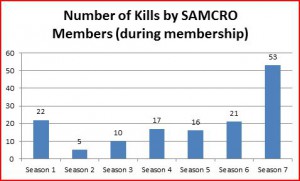 Number five: The continuity errors. This is a minor complaint, but part of a larger criticism related to editing as a whole. Every show has these types of errors and they sometimes are noticeable, sometimes not. On SOA, they seemed to be noticeable and distracting, and for a show of this caliber, it was unexpected. These include blood and tattoos that either disappear or change places from scene to scene, cars that change make and model from scene to scene, actors that have or wear items then don’t have them, etc. It’s a minor complaint, but a complaint nonetheless. Details matter.
Number five: The continuity errors. This is a minor complaint, but part of a larger criticism related to editing as a whole. Every show has these types of errors and they sometimes are noticeable, sometimes not. On SOA, they seemed to be noticeable and distracting, and for a show of this caliber, it was unexpected. These include blood and tattoos that either disappear or change places from scene to scene, cars that change make and model from scene to scene, actors that have or wear items then don’t have them, etc. It’s a minor complaint, but a complaint nonetheless. Details matter.
Now on to Silicon Valley. According to WorldCat, season 1 is held by just 2 Nebraska public libraries. The show follows main character Richard Hendriks (Thomas Middleditch) and his friends or colleagues (however you might see it) who all live together under one roof in a startup incubator in or near Palo Alto. Erlich Bachmann (played brilliantly by TJ Miller, and adequately filling the no-nonsense sharp witted gap left by the departure of Roger Sterling) lets Richard and his friends stay in his house rent free in exchange for a 10% stake in the projects they invent while living in the incubator. Richard develops a powerful search algorithm (Pied Piper) and the show follows the path from Pied Piper’s inception to startup, as well as the rest of the Silicon Valley world. Now, before someone mentions that there is a certain degree of unbelievability in Silicon Valley (see SOA criticism above), the difference is that Silicon Valley isn’t pretending to pass everything off this way (as SOA is with a straight face).
The show’s creator, Mike Judge (Beavis and butt-head, Office Space, King of the Hill) has previously worked at a Silicon Valley startup, and does a pretty good job of satirizing the culture. Although some, such as Elon Musk, are not quite as amused. Now for the record, the Dude is a Musk (and Tesla and Solar City) fan, although his frequently quoted response to Silicon Valley actually does more to prove that the HBO series hits, rather than misses the mark. Musk is quoted as saying:
“I really feel like Mike Judge has never been to Burning Man, which is Silicon Valley. If you haven’t been, you just don’t get it. You could take the craziest L.A. party and multiply it by a thousand, and it doesn’t even get … close to what’s in Silicon Valley. The show didn’t have any of that.” Judge didn’t bite when he responded to Musk’s comment, merely stating that: “I mean, he’s Elon Musk and he knows more about the tech world than I do, so I would never argue with that. But we’re doing a comedy. This isn’t a documentary.” In a way, Musk’s comment seems self-satirizing (read it again a few times and it will become more apparent). TJ Miller also had an apt response: “Yeah, but, and I’m not gonna name names, but if the billionaire power players don’t get the joke, it’s because they’re not comfortable being satirized, … And they don’t remember that to be a target of humor is an honor — you have to be venerated to be satirized. Like, I’m sorry, but you could tell everything was true. You guys do have bike meetings …”
For the record, perhaps Judge will think of a way to work Musk’s thoughts into a future episode, and I could go on about Burning Man and Silicon Valley, but it would be hard to beat this Burning Man spoof (complete with a great Petyr Baelish imitation). Shaka.
Posted in General, Library Management, Technology, Uncategorized
Leave a comment
Nebraska Then and Now
When looking at pictures of historical buildings in Nebraska Memories I’m always surprised at how many buildings and places I recognize. Many of these buildings have been around for 100 years and are still being used today. Over the years, as I’ve traveled across the state, I’ve tried to take pictures of some of these historical buildings because I thought it would be fun to see how much or how little these buildings have changed.
As I’ve taken pictures of these buildings there are a few things that I have noticed. First of all there is a lot less clutter in the historical photos. Today many of the pictures I’ve taken are full of stop lights, street signs, and electrical lines. Also it appears that we have planted a lot of trees over the past 100 or so years. I like trees. I think it’s great we have planted so many but it really makes it hard to take a picture of a building when it is surrounded by trees. The last thing I’ve noticed as I’ve looked at the old photos is angle from which the photos were taken from. The photographers were either able to stand further away from the buildings or they had access to a neighboring building and took the picture out the window or from the rooftop. Also you can only move so far back when you are standing on a street corner in downtown Omaha surrounded by tall buildings.
I hope you enjoy looking at these pictures to see how some of these buildings have and have not changed over the years. Click on an old picture to learn more about the building. Click on the new picture to see a larger version of the new picture.
Flat Iron Building – 17th, St. Mary’s, Howard, and 18th Streets, Omaha
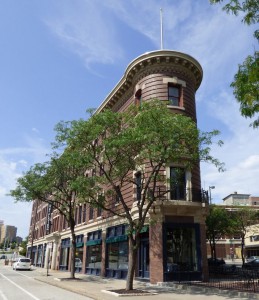
Picture: 2015
Read about the recent renovations to this building.
Omaha Public Library – 19th and Harney Streets, Omaha
Little Building – 11th and O Streets, Lincoln
Omaha High School – 20th and Dodge St, Omaha
Mitchell High School – 19th Ave and 18th St, Mitchell
Exterior of Glidden Paints building – 31st and Leavenworth St, Omaha
Public Library, Schuyler, Nebr. – E 10th and C Streets, Schuyler
Post office, South Omaha, Neb. – S 24th and M Streets, Omaha
Donley Stahl Building – 13th and N Street, Lincoln
Carnegie Library, Ashland – N 15th and Boyd Streets, Ashland
Pavilion at Miller Park – Millier Park Drive, Omaha
Keeline Building – 17th & Harney Streets, Omaha
Sharp Building – 13th and N Street, Lincoln
Security Mutual Building – 12th and O Streets, Lincoln
First National Bank – 16th and Farnam Streets, Omaha
Visit Nebraska Memories to search for or browse through many more historical images digitized from photographs, negatives, postcards, maps, lantern slides, books and other materials.
Nebraska Memories is a cooperative project to digitize Nebraska-related historical and cultural heritage materials and make them available to researchers of all ages via the Internet. Nebraska Memories is brought to you by the Nebraska Library Commission. If your institution is interested in participating in Nebraska Memories, see http://nlc.nebraska.gov/nebraskamemories/participation.aspx for more information, contact Devra Dragos, Technology & Access Services Director.
Posted in General, Nebraska Memories, Technology
2 Comments
The Data Dude on the Pie Chart
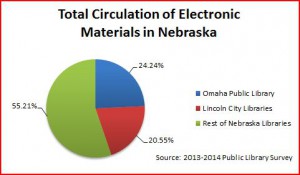

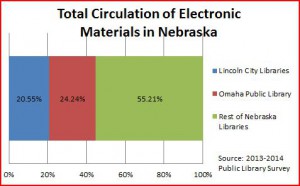 A lot of so called data presentation experts have taken to bashing the use of the pie chart. Notably, data man Edward Tufte has led this crusade, proclaiming that “the only thing worse than a pie chart is several of them.” Perhaps a bit more subtle, Stephen Few has written a lengthy tirade called Save the Pies for Dessert. While it might be easy to conclude that because someone with Tufte’s or Few’s credentials believe that pie charts are rubbish then it holds that they are in fact rubbish, such a generalization would be a good example of the logical fallacy ad verecundiam (appeal to authority). The Dude won’t fall into that trap, and Tufte won’t get a free pass either. The truth of the matter is that pie charts can be effective, as long as they illustrate the point that you are trying to make and you follow some simple rules.
A lot of so called data presentation experts have taken to bashing the use of the pie chart. Notably, data man Edward Tufte has led this crusade, proclaiming that “the only thing worse than a pie chart is several of them.” Perhaps a bit more subtle, Stephen Few has written a lengthy tirade called Save the Pies for Dessert. While it might be easy to conclude that because someone with Tufte’s or Few’s credentials believe that pie charts are rubbish then it holds that they are in fact rubbish, such a generalization would be a good example of the logical fallacy ad verecundiam (appeal to authority). The Dude won’t fall into that trap, and Tufte won’t get a free pass either. The truth of the matter is that pie charts can be effective, as long as they illustrate the point that you are trying to make and you follow some simple rules.
The Dude did a few quick charts in Excel for the purpose of demonstration (see right), and here is a brief example of a situation where a pie chart might be a more effective method to displaying the data and get your point across. The following charts show the circulation of electronic materials in Nebraska, using data from last year’s public library survey. Which one more effectively illustrates the data? If you are considering a pie chart, let’s summarize a few basic points.
Number 1: Keep it simple. Skip the 3d crap options that excel has if you are doing it in excel. This is analogous to the presenter using every, and I mean every, transition between power point slides (the fade, flip, dissipate, well, you get the idea). It’s almost as annoying as a single person (or family of 2 or even 4 for that matter) driving a GMC Yukon Denali. Unless, of course, the Denali is fitted with baller rims or you should happen to be visiting the summit of Mauna Kea.
Number 2: Label things and provide your sources, but don’t go overboard. The key here is that your chart should be readable. You be the judge of that.
Number 3: Don’t have too many slices in your pie chart. There are countless examples of too many slices. Here is one from the Australian Recording Industry Association (ARIA) Music Awards.
Number 4: Consider an alternative such as bar, stacked bar (a/k/a Don Draper’s living room), or just numbers (make them large and add some color). If you have numerous charts in your report, try mixing it up with different charts or even use some tables. Don’t make every chart a pie chart (or a bar chart for that matter).
Number 5: If the pie doesn’t work, resist the urge to replace it with a donut chart. Remember that a donut chart is just a pie chart with the unnecessary “premium” trim package. This is like a Lexus instead of a Toyota. It’s all the same.
Number 6: Pie charts aren’t the best choice when making comparisons (side by side pie charts don’t work as well as, say a bar chart).
Number 7: Pie charts have 25% built in – everyone knows where 25%, 50%, and 75% are on a pie chart. Keep that in mind if your data is close to those ranges.
Number 8: Always include citations to your sources.
Shaka.
Posted in General, Library Management, Uncategorized
Leave a comment
New State Agency Publications Received at the Library Commission
New state agency publications have been received at the Nebraska Library Commission for July and August 2015. Included are titles from Colleges and Universities, Emergency Management, Highways and Roads, and the Department of Insurance, to name a few.
The Data Dude – Broadband in Underserved Areas
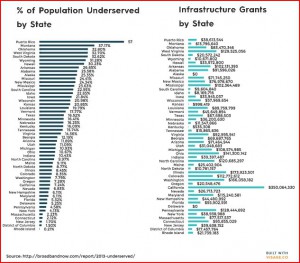 The Dude was knee deep in working on a rant, er, rather, an informative post, about pie charts when he came down sick with a nasty head cold and allergy attack. It seems like the kind that a few expired Allegra poppers might not immediately eradicate, so it’s on to Plan B, which for this week is remote desktop access courtesy of the NLC CompTeam (thanks, CompTeam) and a short tidbit on broadband (now defined by the FCC as 25 Mbps downstream) and underserved areas. As a part of this report, FCC Commissioner Jessica Rosenworcel said: “We can do audacious things if we set big goals, and I think our new threshold, frankly, should be 100Mbps.” Good progressive thinking, Jessica.
The Dude was knee deep in working on a rant, er, rather, an informative post, about pie charts when he came down sick with a nasty head cold and allergy attack. It seems like the kind that a few expired Allegra poppers might not immediately eradicate, so it’s on to Plan B, which for this week is remote desktop access courtesy of the NLC CompTeam (thanks, CompTeam) and a short tidbit on broadband (now defined by the FCC as 25 Mbps downstream) and underserved areas. As a part of this report, FCC Commissioner Jessica Rosenworcel said: “We can do audacious things if we set big goals, and I think our new threshold, frankly, should be 100Mbps.” Good progressive thinking, Jessica.
While it is axiomatic that libraries play a huge role in bridging the underserved gap (especially in smaller communities), how does Nebraska rate as far as underserved areas (and infrastructure grants)? Well, you could try to decipher the massive bar chart above, or look at this simple graphic I created (you might have to click to enlarge):
Shaka.
Posted in General, Library Management, Technology, Uncategorized
1 Comment
Librarians Encouraged to Promote New NET Production “Yours, Willa Cather” on Radio, Television and Digital
Willa Cather wrote some of the most unforgettable fiction of the 20th century including the novels My Antonia and O Pioneers! But the voice of the private Willa Cather tells a much more personal story. Until recently, many scholars believed that Nebraska author Willa Cather burned most of her letters before her death. Not so. In the new NET Television documentary and NET Radio series, the private person is revealed through letters that survived, hidden away in drawers, trunks and archives.
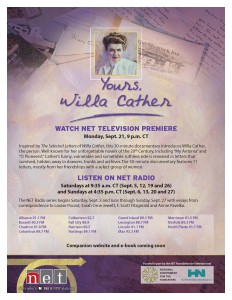 The NET Television premiere is 9:00 – 9:30 p.m. CT, Monday, Sept. 21. The NET Radio series begins Saturday, Sept. 5 and runs through Sunday, Sept. 27. Nebraskans can listen Saturdays at 9:35 a.m. CT (Sept. 5, 12, 19 and 26) and Sundays at 4:35 p.m. CT (Sept. 6, 13, 20 and 27) on NET Radio.
The NET Television premiere is 9:00 – 9:30 p.m. CT, Monday, Sept. 21. The NET Radio series begins Saturday, Sept. 5 and runs through Sunday, Sept. 27. Nebraskans can listen Saturdays at 9:35 a.m. CT (Sept. 5, 12, 19 and 26) and Sundays at 4:35 p.m. CT (Sept. 6, 13, 20 and 27) on NET Radio.
Based on the 2013 book The Selected Letters of Willa Cather, co-edited by University of Nebraska-Lincoln professor Andrew Jewell and Texas scholar Janis Stout, the NET project has created original video, audio, photography, and commentary. New digital resources including a companion website and e-book will soon be launched. Visit catherletters.org later in September.
The documentary was produced by NET’s Christine Lesiak who also contributed to the 2005 American Masters production of “Willa Cather – The Road is All,” which aired nationally on PBS. The voice of Willa Cather is read by actress Marg Helgenberger of Fremont, known for her Emmy-nominated role on the commercial television series “CSI.”
“Yours, Willa Cather” is funded in part by the NET Foundation for Television, Humanities Nebraska and the National Endowment for the Humanities.
Posted in Books & Reading, General
1 Comment
What’s Sally Reading?
The Recaptains website reminds you what happened in a book to get you ready to read next book in series. As it states on their web page, “Yay! The next book in your favorite series is coming out soon! But hey, wait a second… what was it that happened in book 1 again? Did they kiss? Did they beat the bad guy? Did they have to run for their lives and was there a Cliffhanger with Capital C?” Now you can find out quickly and easily what happened in the previous book.
It contains Goodreads summaries and with a click on “read more” you can access more detailed information. There it includes an “In Short” paragraph, a “What Went Down” bulleted list of actions that occurred in the book, and “How Did It End.” I just read through the information on The Diviners by Libba Bray since I plan to read the sequel Lair of Dreams this weekend. It did a great job of reminding me who the characters are and what events happened in the first book. It doesn’t cover everything, I just searched for Terry Pratchett and he is not on their author list, still I’m going to be using this site often.
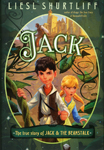 My highlighted book this time is Jack: The True Story of Jack & the Beanstalk by Liesl Shurtliff; I heard the author speak at the Norfolk Public Library’s 21st Annual Literature Festival held on July 25, 2015, which is a great opportunity to hear authors talk about their writing processes and get a book signed! (Their next Festival is scheduled for July 30, 2016.)
My highlighted book this time is Jack: The True Story of Jack & the Beanstalk by Liesl Shurtliff; I heard the author speak at the Norfolk Public Library’s 21st Annual Literature Festival held on July 25, 2015, which is a great opportunity to hear authors talk about their writing processes and get a book signed! (Their next Festival is scheduled for July 30, 2016.)
In the book, Jack’s 7-times great grandfather was the famous Jack the Giant Killer and this Jack wants to imitate him, except that there are no giants. But then two giants come down from the sky and take everything – the entire town – and Jack is soon up in their land to find his father and slay some giants. Things are not that easy. Full of adventure this twist on the fairy tale is logical and fun – with a bit of a message about greed. Fans of her book Rump: The True Story of Rumplestiltskin (one of the Golden Sower nominees for 2015-2016) are sure to grab it. This book is written for grades 3-6.
(The Nebraska Library Commission receives free copies of children’s and young adult books for review from a number of publishers. After review, the books are distributed free, via the Regional Library Systems, to Nebraska school and public libraries.)
Posted in Books & Reading, General, Youth Services
Leave a comment
Free Business Program: Recordkeeping Basics and Benefits
 Do you have a telephone line in your meeting room? A speaker phone? If yes, you can have a terrific “Lunch ‘n Learn” program for your community’s business people.
Do you have a telephone line in your meeting room? A speaker phone? If yes, you can have a terrific “Lunch ‘n Learn” program for your community’s business people.
Each month GROW Nebraska features a different presenter and topic related to marketing or small business. September’s presentation is on September 17 from Noon to 1:00 p.m. The trainings are FREE and open to the public.
Recordkeeping Basics and Benefits
What are the benefits of keeping good records for your business? Which expenses are deductible on your tax return? What are the IRS substantiation requirements? Join J’Nan Ensz, CPA and Managing Member, Accounting and Business Consulting Group, LLC as she answers these and other questions about good record keeping. In addition to staying in compliance, good record keeping will help you determine the profitability of your business.
Registration is required at www.grownebraska.org to receive connection information.
Throwback Thursday: David City Carnegie Library.
Posted in General, Nebraska Memories
Leave a comment
The Data Dude on Census Narrative Profiles
 As a number of you work through your accreditation applications, you might also be reviewing your strategic planning documents. Today’s post is about the Narrative Profile from the Census Bureau’s American Community Survey. As you gather information about your community, this simple yet powerful tool might help you with your planning. The Narrative Profile covers 15 different topic areas; users can start their search by zooming in on a map or by using dropdown menus (Step 1). For today’s illustration, a library community was chosen at random, the Lied Imperial Public Library, or the Imperial, Nebraska community.
As a number of you work through your accreditation applications, you might also be reviewing your strategic planning documents. Today’s post is about the Narrative Profile from the Census Bureau’s American Community Survey. As you gather information about your community, this simple yet powerful tool might help you with your planning. The Narrative Profile covers 15 different topic areas; users can start their search by zooming in on a map or by using dropdown menus (Step 1). For today’s illustration, a library community was chosen at random, the Lied Imperial Public Library, or the Imperial, Nebraska community.
Here is how you get your Narrative Profile: After choosing “Dropdown Menus” from Step 1, you then select a geography level from step 2. In this case, Imperial is a “Place”, so we select Place and then Nebraska > Imperial city, Nebraska from Step 3. There are other options besides place, including geography levels such as county, Census Tract, Zip Code, or Metropolitan/Micropolitan Statistical Area (Metropolitan=core urban area of 50,000 or more population; Micrpolitan=core urban area of 10,000 or more population, but less than 50,000). After the place of Imperial is selected, there is a link at the bottom that says “Get Profile”. Clicking on this spits out a report that you could either print, save, or copy and paste parts of it, including the many charts and graphs that it contains. The data covers 2009-2013.
The report contains data from various topical areas. For starters, if we look at household data there are 900 households in Imperial, of which 52% are married couple families. There are 30.8% persons that live alone and 17.2% are other families or nonfamily households. 14% of the population in Imperial spoke a language different than English at home, and 94.2% of that 14% spoke Spanish. The education data is expressed in a pie chart that was generated in the Narrative Profile, located at the top of this post (click on the chart to expand and actuall read it).
There are many additional categories, including data tables and illustrations such as the one above. Some of these are employment status and type of employer, industries (retail trade is the highest at 26.7%), occupations, commuting to work (81.1% drive alone and 9.8% walked), income (women, unfortunately make about $14,000 less than men in Imperial), poverty rate (12% overall), health insurance (16% do not have insurance), population age distribution, and housing characteristics.
While the Narrative Profile certainly isn’t as comprehensive as the reports you can build from the Advanced Search section on American FactFinder, for a quick snapshot of your community it’s a good starting point. And it has the extra benefit of producing some nice basic charts and graphs that you are free to copy and paste. The Dude likes not only reliability, but simplicity. Shaka.
Posted in Census, General, Information Resources, Library Management, Uncategorized
Tagged census
Leave a comment
Nebraska Librarians Encouraged to Promote 2015 Hispanic Heritage Month Essay Contest
 The Nebraska Latino American Commission invites the youth of Nebraska to participate in the Ninth Annual Hispanic Heritage Month State Commemoration Essay Contest. The theme revolves around a quote from influential leader Julian Castro, former mayor of San Antonio, current Secretary of U.S. Housing & Urban Development. Students are asked to write about what his words and Hispanic Heritage Month mean to them.
The Nebraska Latino American Commission invites the youth of Nebraska to participate in the Ninth Annual Hispanic Heritage Month State Commemoration Essay Contest. The theme revolves around a quote from influential leader Julian Castro, former mayor of San Antonio, current Secretary of U.S. Housing & Urban Development. Students are asked to write about what his words and Hispanic Heritage Month mean to them.
“In the end, the American dream is not a sprint, or even a marathon, but a relay. Our families don’t always cross the finish line in the span of one generation. But each generation passes on to the next the fruits of their labor.”
Please note that eligibility requirements are inclusive: Students of all ethnicities currently enrolled in a Nebraska public, private, home school or magnet school (grades 6 – 12). Entries welcome in English or Spanish, and must include a signed entry form. More information at http://www.latinoac.nebraska.gov/
All essays due by Thursday, September 17, 2015 at 5 P.M. Essays and entry forms may be submitted by email to Jasel.Cantu@nebraska.gov, via fax at 402-471-4381, or mailed to:
Nebraska Latino American Commission
ATT: Hispanic Heritage Month Essay Contest
P.O. Box 94965
Lincoln, NE 68509-4965
CONTACT:
Jasel Cantu
Public Information Officer
Latino American Commission
Nebraska State Capitol
6th Floor, PO Box 94965
Lincoln, NE 68509-4965
Office: 402-471-2791
Fax: 402-471-4381
Email: Jasel.Cantu@Nebraska.gov
Posted in General, Programming, Public Relations, Youth Services
Leave a comment
Free Tools for School Library Advocates Available Now
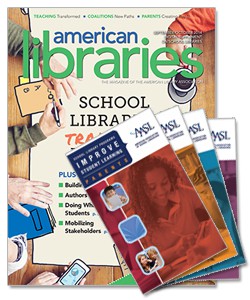 School library advocacy packs containing tools to spread the word about the many ways school librarians are transforming teaching and learning are now freely available through the ALA online store. Generously sponsored by Bound to Stay Bound Books (BTSB), these specially created packs are available while supplies last. Valued at $29.99, school library advocates pay only for shipping.
School library advocacy packs containing tools to spread the word about the many ways school librarians are transforming teaching and learning are now freely available through the ALA online store. Generously sponsored by Bound to Stay Bound Books (BTSB), these specially created packs are available while supplies last. Valued at $29.99, school library advocates pay only for shipping.
Posted in General, Public Relations, Youth Services
Leave a comment
